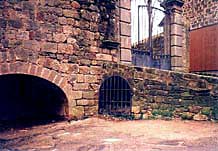
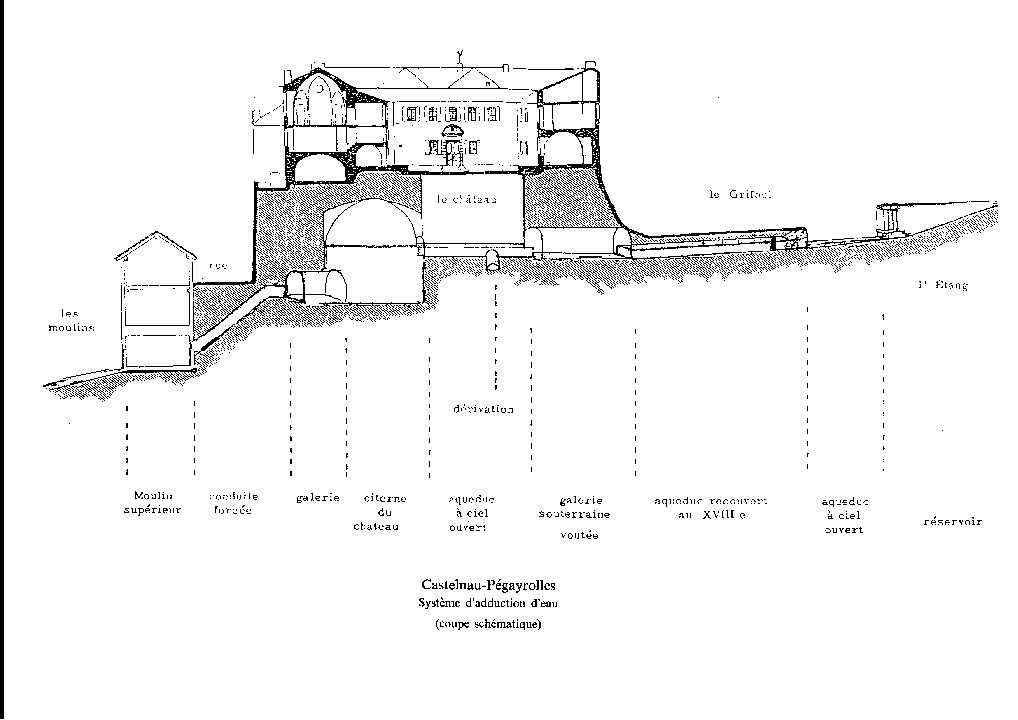
D. Salvan - 1940
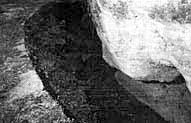 |
In order to transport water on to the rock where Castelnau sits, artisans had to build an aqueduct, for a part open to the sky and partly underground. |
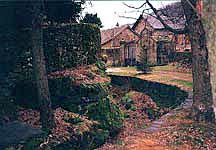 |
|
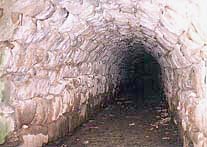
|

|
These reservoirs were used to collect and regulate the flow. The most important , called “l’étang” which means “the pond” is situated above the village. This pond was designed to collect water running from the plateau and worked as a flow regulator for the entire water supply system. |

|
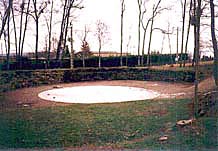
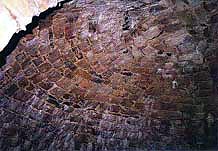
|
It was designed to supply the castle with water. However by its natural upstream position, it was giving the necessary pressure to allow Castelnau’s mills to operate. |
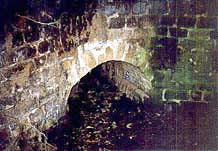
|
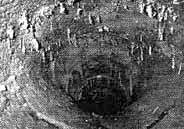
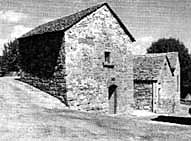
|

|